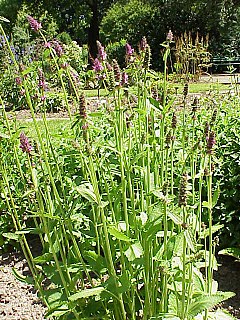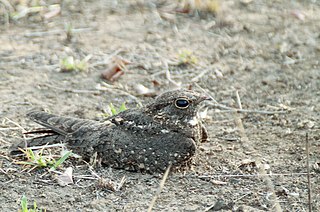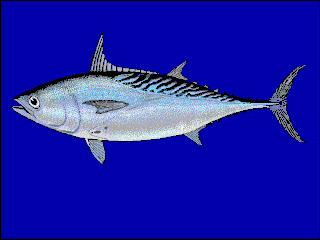
The western mosquitofish and eastern mosquitofish are a species of freshwater fish, also known commonly, if ambiguously, as simply mosquitofish or by its generic name, Gambusia, or by the common name gambezi.

The atypical tarantulas or purseweb spiders consist of only three genera. Purseweb spiders are accomplished ambush predators that spend most of their time in a sock-like, silken retreat on the ground from where they kill their prey.

The little swift, is a small species of swift found in Asia and Africa. It is found both in urban areas and rocky cliffs where it builds its nest in the many typical of all members of the order Apodiformes. A former eastern population is now separated a distinct species, house swift.

Stachys affinis, commonly called crosne, chinese artichoke, japanese artichoke, knotroot, or artichoke betony, is a perennial herbaceous plant of the family Lamiaceae, originating from China. Its rhizome is a root vegetable that can be eaten raw, pickled, dried or cooked.

The savanna nightjar is a species of nightjar found in South and Southeast Asia. Eight subspecies are recognised: C. a. monticolus, C. a. amoyensis, C. a. stictomus, C. a. affinis, C. a. timorensis, C. a. griseatus, C. a. mindanensis and C. a. propinquus. Its habitat is open forest and areas with scrub. Its length is about 25 cm (9.8 in). The upperparts are brownish-grey and vermiculated, with pale brown speckles. The underparts are brown, with bars. The savanna nightjar is nocturnal. Its song is a squeaky kweek kweek. The IUCN Red List has assessed the species to be of least concern because it has a large range and its population trend is stable.

Dryopteris affinis is a fern native to western and southern Europe and southwestern Asia. It is most abundant on moist soils in woodlands in areas with high humidity, such as the British Isles and western France. In the Mediterranean region and the Caucasus it is confined to high altitudes.
The chocolate pipistrelle is a species of vesper bat in the family Vespertilionidae. It is found in China, India, Myanmar, Nepal, and Sri Lanka.

The black-chested jay is a species of bird in the family Corvidae.

The intermediate horseshoe bat is a bat species of the family Rhinolophidae that is very widespread throughout much of South Asia, southern and central China and Southeast Asia. It is listed by IUCN as Least Concern as it is considered common where it occurs, without any known major threats.
Parapinnixa affinis, the California Bay pea crab, is a species of pinnotherid crab endemic to Southern California. It is a small crab that lives commensally in the tube of a tube-dwelling worm. It was one of the first marine crustaceans to be included on the IUCN Red List in 1996.
Falsistrellus is a genus of vespertilionid family of bats, small predatory flying mammals. The type species describes a specimen found in Australia. The poorly researched species have been variously placed by authors, and revised again by studies of their distinct characteristics, consequently the falsistrelles may also be referred to as pipistrelles or false pipstrelles.

Euthynnus affinis, the kawakawa or mackerel tuna, is a species of ray-finned bony fish in the family Scombridae, or mackerel family. It belongs to the tribe Thunnini, better known as the tunas. This is an Indo-Pacific species which is found from the Red Sea to French Polynesia.

The southern river terrapin is a turtle of the family Geoemydidae found in Malaysia, Indonesia and Cambodia.

"Crocodylus" affinis is an extinct species of crocodyloid from the Eocene of Wyoming. Fossils were first described from the Bridger Formation by American paleontologist Othniel Charles Marsh in 1871. Marsh described the species, along with every other species of crocodyloid in the Bridger Formation, under the genus Crocodylus. Recent phylogenetic studies of crocodyloids show that "C." affinis is not a species of Crocodylus, but a genus has not yet been erected to include the species. Other Bridger species such as Crocodylus clavis and Brachyuranochampsa zangerli have been synonymized with "C." affinis.

"Crocodylus" acer is an extinct species of crocodyloid from the Eocene of Utah. A single well preserved skull was described by paleontologist Edward Drinker Cope in 1882 and remains the only known fossil of the species. It was found from the Wasatchian-age Green River Formation. "C." acer had a long, narrow snout and a low, flattened skull.

Bombus affinis, commonly known as the rusty patched bumble bee, is a species of bumblebee endemic to North America. Its historical range in North America has been throughout the east and upper Midwest of the United States, north to Ontario, Canada, where it is considered a "species at risk", east to Quebec, south to Georgia, and west to the Dakotas. Its numbers have declined in 87% of its historical habitat range. On January 10, 2017, the United States Fish and Wildlife Service placed B. affinis on the list of endangered species, making the rusty patched bumblebee the first bee to be added to the list in the continental United States.

Mesosini is a tribe of longhorn beetles of the Lamiinae subfamily.
Eurymesosa is a genus of longhorn beetles of the subfamily Lamiinae, containing the following species:
Eurymesosa albostictica is a species of beetle in the family Cerambycidae. It was described by Stephan von Breuning in 1962. It is known from Laos.
Phytoecia affinis is a species of beetle in the family Cerambycidae. It was described by Harrer in 1784, originally under the genus Leptura. It has a wide distribution in Europe.
















